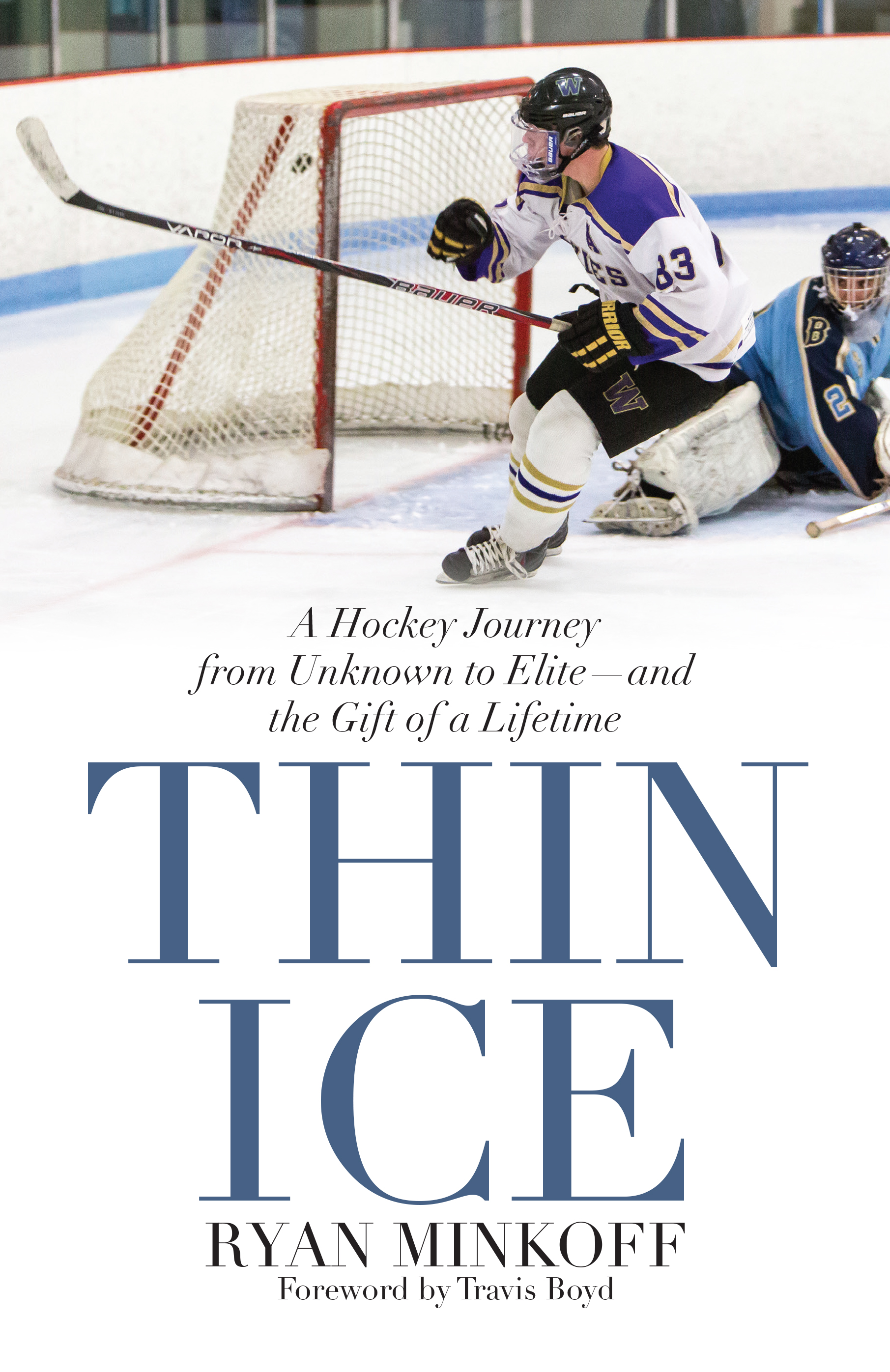There is the old adage of not wanting to know how the sausage is made, you just want to enjoy the thing in a bun with sauerkraut.
Well, the same can be said of sport, and hockey to be specific.
You may want to enjoy the sport in a rink with a link and sauerkraut, but do you really want to know how the thing is made?
If you are an ardent hockey fan, a budding player with an eye to the future as a professional, or just an avid sports fan, “Thin Ice” is for you.
“Thin Ice” was penned by Ryan Minkoff and published by Lyons Press.
Minkoff tells his own tale of growth from childhood ice skater through the years of youth hockey to collegiate hockey at University of Washington and finally to his professional time in Finland.
Sounds glamorous, right?
The complete title of the book is “Thin Ice: A Hockey Journey from Unknown
to Elite—and the Gift of a Lifetime”.
That extension to the title is what makes his life’s story and the message all worth the effort.
Minkoff chronicles his progression from mini mites in Minnesota through all the levels of hockey in the “State of Hockey” through high school.
We all know the rumors and the whispered stories of intrigue and yes, treachery, in these levels of hockey. That Minkoff survived the trials and tribulations associated with hockey development is a tribute not only to his own maturity, even at a young age, but to his parents who there for him at every step of the way. He does not needlessly go on about his family, but the insight we are treated to, is compelling and assuring.
Minkoff does not gloss over the seedier side of developmental youth hockey. His portrayal of those early years is compelling, and well, downright frightening.
Inter-city squabbles, parental beefs, intra-squad politics, and just sports politics in general are on full display.
Despite all of this, Minkoff maintains a steady focus on his own hockey career and you can feel the intensity of his decision-making processes. More importantly, you ride along on the ups and downs of his development through to University of Washing’s American Collegiate Hockey Association (ACHA) team.
Lesson for the budding hockey player is this, there are no shortcuts. There are short paths and long-haul efforts, each having their own value. As Minkoff relates, there are no shortcuts.
Coming out of the ACHA, Minkoff was looking for a professional gig and ended up in Finland with Lapuan Virkiä.
Offered a roster spot in a lower division league in Finland, Minkoff had the foresight to negotiate his own contract. We learn his teammates had not had the same opportunity.
The reader gets a close up view of the relationship between the team and the player in Minkoff’s recounting.
It is not pretty, and it is in fact, downright ugly.
Here is the bottom line to “Thin Ice”. The long view path taken by Minkoff is less worn than others, but he discovered in himself a new path following his departure from Finland.
Minkoff took those lessons from Finland, including the harder lessons of some of his teammates and created and founded 83, LLC, global ice hockey agency representing players at the junior, college, and professional level.
When I say it is not easy read, that is not a pejorative, Quite the opposite. If you want to know what hockey, and most likely any other developmental sport landscape is like, you need to be made uncomfortable by Minkoff’s writing.
If you have children in youth sport, you should be reading this book.
If you want to learn about perseverance and commitment, you need to read this book.
The lessons are obvious and the strength of Minkoff is infectious.
“Thin Ice” was published 1 November 2020 and is available on Amazon.com.


You must be logged in to post a comment.